#king of britons
Explore tagged Tumblr posts
Text
Strength & FE3H
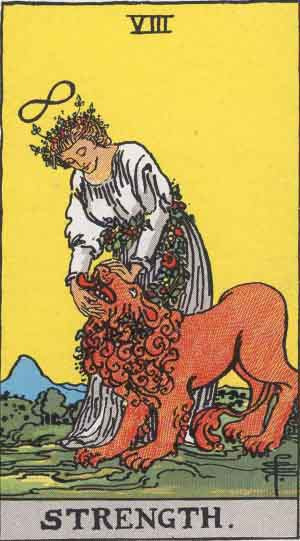
Contrary to some other readings of the Strength card, it is actually not about physical strength. It is about spiritual and emotional fortitude. It is about courage, a strength of the heart. It is about resilience in the face of difficulties, and the ability to overcome them.
We see in the card a maiden calmly handling a lion, and the lion reciprocating with its tail between its legs and its tongue lolling out. The lion can represent a terrible situation that could have become very dangerous for the maiden. However, the maiden is calm, and her spiritual fortitude wins over the lion’s ferociousness. (Ill-advised as a real life experiment. I promise you that no matter how strong your spirit is, you will not literally be able to tame a lion. This is just a representation of strength over difficulties using symbolism.)
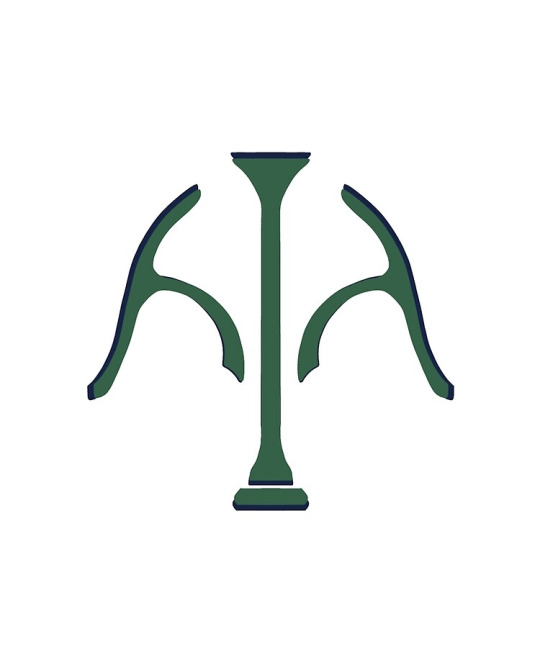
There is some debate over which crest aligns with Strength, and my thought is that the Crest of Blaiddyd aligns with this card the best. Aside from the fact that it literally makes its bearers stronk, the Crest of Cichol is literally a scale? Like, it’s pretty clear cut that’s supposed to be Justice.
So the name Blaiddyd is probably based off of a legendary king of Britons, Bladud. Interestingly, he’s supposedly the father of Lear. Seeing as the Alliance broke off from the Kingdom, and most Alliance names are based off of the play King Lear by Shakespeare, that’s kind of interesting? Like they thought about possible connections here, haha.

Bladud studied philosophy in Athens, and was disowned due to contracting leprosy. In legends, he healed himself and others through mud baths, which I’m actually not sure is a valid way of curing leprosy. It’s possible that he just happened to get better after the mud baths, or perhaps there were other factors in the mud baths that we can no longer verify. After curing himself of leprosy, he reclaimed his throne. Then he got into necromancy, hoping to skirt death a second time.
The dragon connected to this crest is the Grim Dragon. I can’t really figure out what this can connect to except possibly the grim reaper or other gods of death. These gods invite and guide humans from life to death and are pretty necessary in the cycle of life.
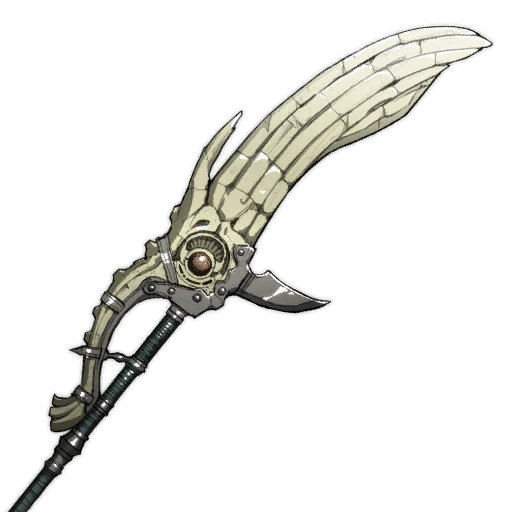
My thought is that the Grim Dragon might be all dark and shrouded in wisps of thick black smoke appearing in the shape of scraps of cloth. It may also look the most uncomfortably human of the dragons, as what remains of its hand looks unnervingly human-like. Perhaps it wore a grim expression on top of just looking like an absolute downer.
My character connection to all these things will have to be Dimitri Alexandre Blaiddyd. He survives through so much trauma and difficult circumstances. When it’s all over, he learns better coping methods and finds a strong support network. He comes out stronger. Just like Bladud, he suffers an exile and orchestrates a return through self-healing. The connection to the Grim Dragon is a bit of a stretch, but he killed many soldiers during the invasion of Faerghus, so he could be seen as a god of death by some?
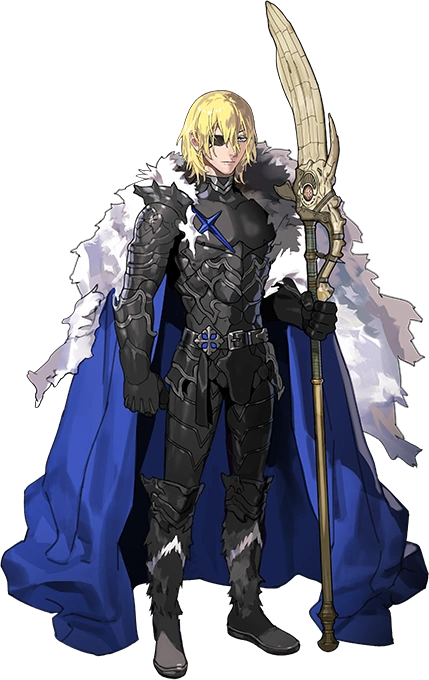
Anyways, that’s my connection of the Strength card and the FE3H crest. What are your thoughts?
Previous: The Chariot
Next: The Hermit
#fe3h#fe16#tarot cards#major arcana#strength#crests#crest of blaiddyd#grim dragon#bladud#king of britons#king lear#leprosy#dimitri alexandre blaiddyd#areadbhar
30 notes
·
View notes
Text







KING ARTHUR (2004) set design appreciation: ― Hadrian's Wall: Arthur's quarters [2/?] inspired by @lady-arryn wonderful set design series [x]
KA20TH CELEBRATION | Day 4 - Home
AN: Here's part II of the Hadrian's Wall series for today's @ka20th prompt. This one was interesting because we never truly got to see Arthur in his own quarters. I know we had the scene where he slept with Guinevere but that was it. Wish we got to see more!
Also to anyone who's writing fics for this film, feel free to use this has visual inspiration if you're struggling with imagery or what-not💖 (P.S. This was probably one of the hardest things to gif, the colouring/lighting in those scenes are horrible 😭)
#king arthur#king arthur 2004#arthur#arthurian mythology#arthurian legend#artorius castus#clive owen#set design#set decoration#scenery#period drama#rome#briton#romans#medieval aesthetic#perioddramaedit#perioddramasource#perioddramagif#dailyflicks#cinemapix#cinamatv#filmedit#filmgifs#fyeahmovies#moviegifs#ka20th#fantasyedit#sceneryedit
44 notes
·
View notes
Text








My favorite arthurian tv shows and minisiers (part 1/2)
(My favorite movies here)
More details under cut. Some of these I love, some are so bad so good, some are beautifully epic, some are just funny.
The Adventures of Sir Galahad: Short one season tv show (15 episodes) about Galahad having to recover Excalibur after it was stolen. Also the one and only show where Galahad and Mordred interact.
The Adventures of Sir Lancelot: 30 episodes of self contained light and sometimes comedic adventures focusing on Lancelot living at Camelot. Still very much enjoyable today! Other characters who appear are Merlin, Arthur and Guinevere.
Arthur of the Britons: The first attempt to make a tv show focusing on Celts and a Celtic Arthur. Episodes are self contained. Kind of strange sometimes, and the only arthurian characters are Arthur, Kay and Ector.
The Legend of King Arthur: An 8 episodes BBC show which adapts Malory. This is the best arthurian tv show ever created! It also has an amazing Morgan and a stellar Mordred. Actually made me cry!
Entaku no Kishi Monogatari Moero Asa: Toei original anime (no manga) of 30 episodes that follow Arthur's journey to reclaim Camelot after it was conquered by a villain.
The Boy Merlin: Very short 6 episodes series about Merlin as a kid discovering his powers. It was very light and with an historical aesthetic.
Merlin: Two episodes miniseries, extremely popular! It follows Merlin from his childhood to the death of Arthur. While it is not my favorite, it has some great scenes in the second part where Guinevere, Mordred and Lancelot are introduced.
The Mists of Avalon: Miniseries adaptation of a novel I really dislike - but I love this miniseries. It might actually be one of my favorite arthurian series. It focuses on Morgana and her relationship with Arthur and Guinevere. It also has an amazing Mordred and Morgause, one of the rare times where we see Morgause.
#the mists of avalon#the legend of king arthur#the adventures of sir lancelot#merlin#the adventures of sir galahad#merlin 1998#mists of avalon#the boy merlin#king arthur anime#arthur of the britons#fav tv#fav arthurian media
24 notes
·
View notes
Text
THE HOT MEDIEVAL & FANTASY MEN MELEE
QUALIFYING ROUND: 115th Tilt
King Henry V Plantagenet, The Hollow Crown (2012-2016) VS. Arthur Pendragon, Arthur of the Britons (1972–1973)


Propaganda
King Henry V Plantagenet, The Hollow Crown (2012-2016) Portrayed by:
“Hal is Shakespeare’s sexiest history protagonist by virtue of sheer range. He’s a roguish rake, a dashing prince, a rugged king and you bet your ass Tom Hiddleston serves cunt all the way through. I know y’all love Loki and I promise you he’s even sexier blonde.”
Arthur Pendragon, Arthur of the Britons (1972–1973) Portrayed by: Oliver Tobias
“Young Celtic leader that tries to unify the Celtic tribes against the Saxon invaders. This Arthur (not yet king) is smart, cunning and very hot”
Additional Propaganda Under the Cut
Additional Propaganda
For Henry V:

“I can't believe [it took so long for people to submit] text propaganda for Hiddleston!Henry V. Did everyone just look at him in leather trousers and lose the power of speech? I teach with this film, and I am convinced that the leather trousers are responsible for more than one student missing key plot details in that scene (and possibly for more than one epiphany re: sexuality.)...




[Gifset]
"... Thea Sharrock directed this, and she clearly Knows about the female gaze. Surely any time you see a man drawing a longbow like that, it's an invitation to think about hands and arms and shoulders (shoulders!) in other contexts. From a characterization standpoint, too, the coiled physicality of his Henry and how he uses it are really interesting. Also this man's cheekbones should be illegal. And the wooing scene where he lays aside his crown and kneels as if in homage to the princess who is about to be signed over to him via treaty in the next room? Hot damn, I do love a good use of courtly love imagery.”



For Arthur Pendragon:


#medieval hotties qualifiers#henry v#king henry v#arthur pendragon#the hollow crown#arthur of the britons#tom hiddleston#oliver tobias#fuck that medieval man
29 notes
·
View notes
Text
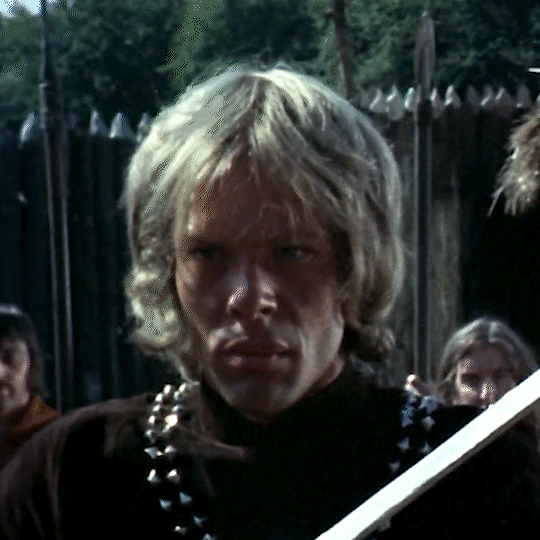
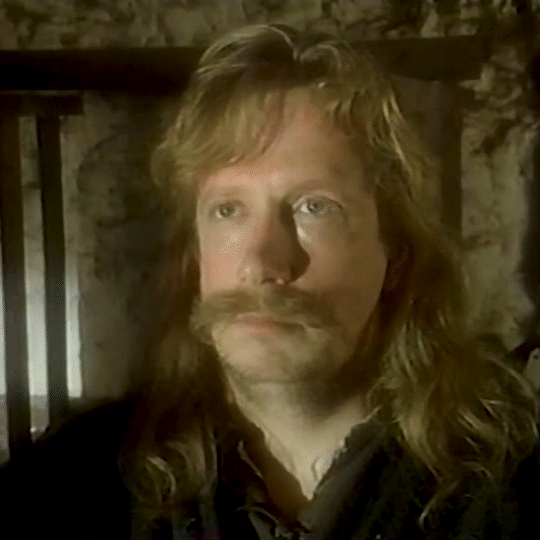

SAXONS ☞ BRITONS Kai, Arthur of the Britons | Cerdic, Merlin of the Crystal Cave | Derfel, The Winter King
#arthurian legend#arthurian legends#arthuriana#arthurian mythology#arthurian literature#sir kay#arthur of the britons#the crystal cave#mary stewart#cerdic#merlin of the crystal cave#derfel cadarn#the winter king#the warlord chronicles#bernard cornwell#gifs i made#my post#so are mullets a requirement or ;^))))))
41 notes
·
View notes
Text
*knocks on the door* does anyone take Monty Python and the Holy Grail?
I forgot my apple pencil at home and resorted to using my aquarel paint (that I got 8 years ago and never used) to draw King Arthur x Sir Bedevere. Do we call it duck shipping idk
I will probably make more, that movie has a surprising potential for Fandom but I can't find the fandom
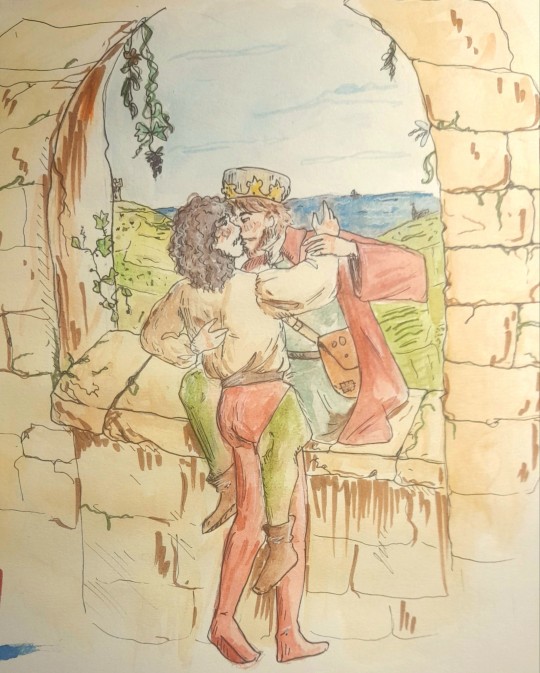
#monty python#monty python and the holy grail#graham chapman#king arthur#arthur king of the britons#sir bedevere
8 notes
·
View notes
Note
(insert photo compilation of King Arthur from "Holy Grail" being a very cute 🥰 yet very silly 😜 bearded king 👑)
OMG YES, WITH PLEASURE. We 👏stan👏 Arthur, King of the Britons in this household.
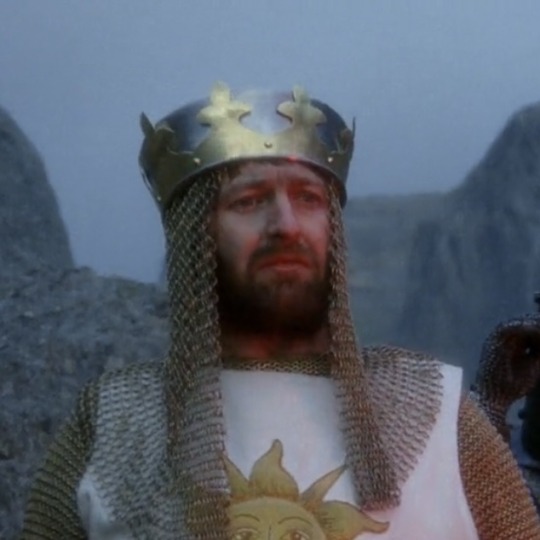
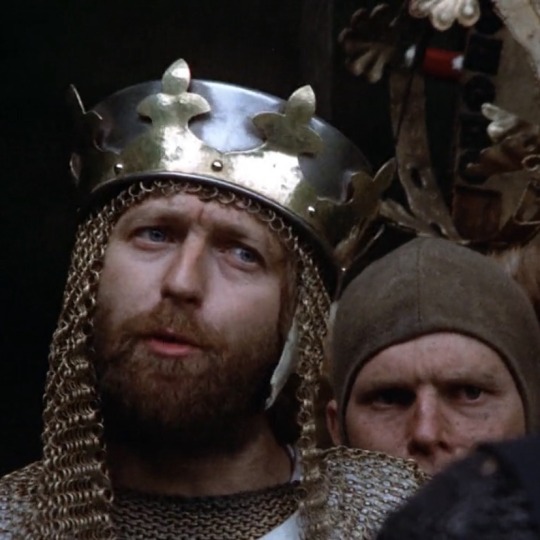
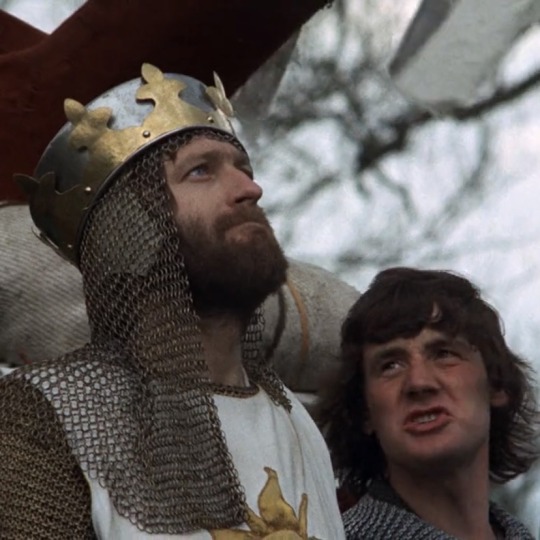
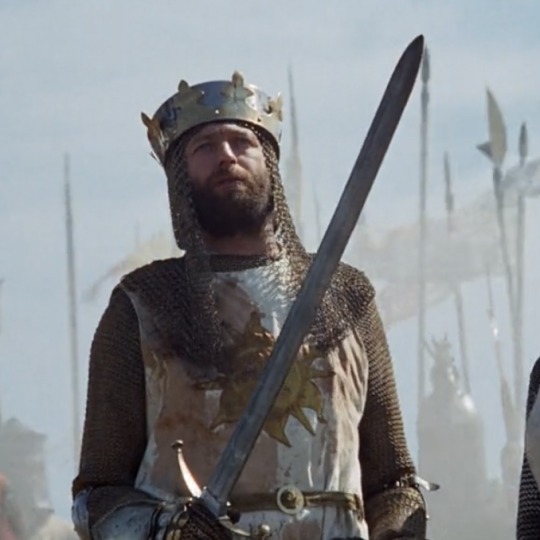

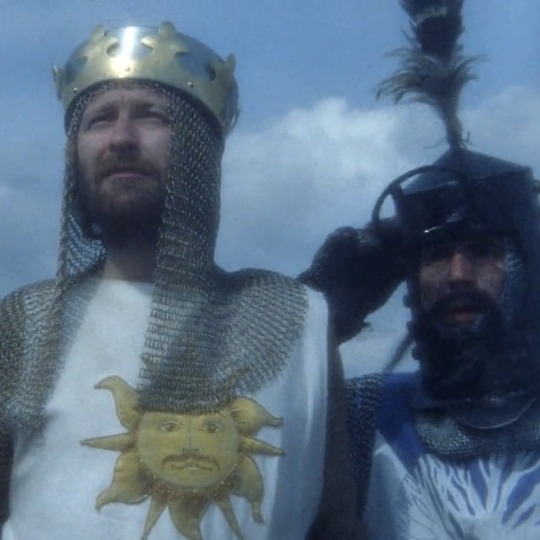
👑🧔♂️🌞 (he really said)
#monty python#monty python and the holy grail#holy grail#arthur king of the britons#graham chapman#terry gilliam#michael palin#terry jones
36 notes
·
View notes
Text

Valentine Portable Typewriter
28 notes
·
View notes
Text






Martin Jarvis as Karn in Arthur of the Britons 2.1 "The Swordsman" (HTV, 1973)
#arthur of the britons#gif#martin jarvis#karn#king arthur#oliver tobias#1970s#period drama#film serials#swords#sword fighting#celts#duels#my gifs#technology is being even more obstreperous than usual but i managed to gif some of this at least
10 notes
·
View notes
Text
While I’m on my “talking about the weird rabbit holes I go down to research stuff for my dnd campaigns,” may I just say that any and all “original” bases of the Arthurian legends or guys who may have inspired aspects of the characters therein are buckwild and I adore just how messy this “canon” is.
Roman-Briton king Ambrosius Aurelianus/Emrys Wledig being a possible Arthur analog, a possible MERLIN analog, AND a possible brother of UTHER FUCKING PENDRAGON, just proves to me that I am allowed to do whatever I want forever to Arthurian reinterpretations. I like to call it “Oops! All Arthur!” and just smash all these guys together into one goulash where literally everyone is every character all the time in the most chaotic way possible. Eat your heart out Chrétien de Troyes/Sir Thomas Malory, it’s my turn with the mythohistorical blorbos!
#also yes most og Arthur tales come from wales or welsh kings (britons)#but Arthur himself?#he wasn’t real!#at all!#there was no real King Arthur!#which really mean’s we’re *all* King Arthur#and isn’t that something special?#Anyway shoutout to Vortigern#gotta be one of my favorite failkings ever#welsh folklore#arthuriana#le mort d’arthur#Arthur Pendragon
6 notes
·
View notes
Text
Boudicca
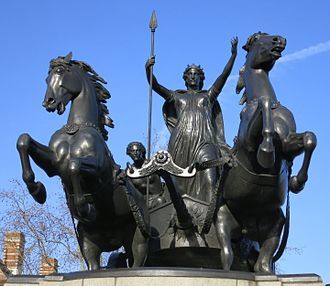
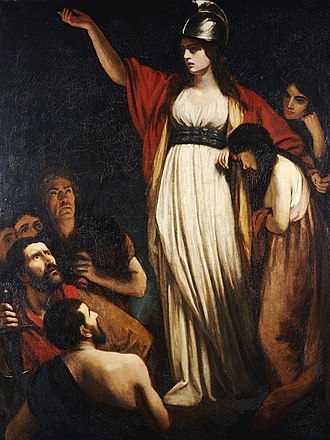
Queen Boudicca is considered to be a British heroine and a symbol of the struggle for justice and independence. She was a queen of the ancient Iceni tribe, and she led a failed uprising in 60 or 61 CE. Her name literally translates to "Victorious Woman", and it is sometimes spelled Boudica, Boudicca, Boadicea, and Boudicea, and sometimes as Buddug in Welsh.
Not much of Boudicca's early life is known, but it is believed she was not of the Iceni tribe and rather of royal descent. We don't even know when she was born, though it is estimated she was born between 25 and 30 CE. The historian, Cassius Dio, wrote "In stature, she was very tall, in appearance most terrifying, in the glance of her eye most fierce, and her voice was harsh; a great mass of the tawniest hair fell to her hips; around her neck was a large golden necklace; and she wore a tunic of fivers colours over which a thick mantle was fastened with a brooch. This was her invariable attire." However, this was written more than a century after her death and wasn't translated into English until 1925, so it may not be accurate.
She may have married King Prasutagus of the Iceni tribe somewhere between the years of 43-45 CE. The Iceni was a Celtic tribe that inhabited what is now Norfolk in England, a parts of the neighbouring counties of Cambridgeshire, Suffolk and Lincolnshire. Her husband may have been one of the eleven kings who surrended to Claudius following the Roman conquest in 43. He was considered an ally of Rome and his tribe was allowed to remain independent to some degree, though disarmed.
Upon Pasutagus' death in 60 or 61 CE, he made his two daughters and the Roman Emperor, Nero, his heirs. The Romans ignored this will and absorbed the kingdom into the province of Brittania. It was Tacitus who detailed the Romans and their pillaging and ransacking, as well as the cruel treatment of Boudicca and her daughters. According to Tacitus, Boudicca was flogged and her daughters, possibly twelve years old, were raped.
Shortly after, Boudicca seemed to become the leading figure in a rebellion against the Romans, possibly because she wanted revenge for the humiliation she and her daughters had suffered. The first move was at Camulodunum (modern Colchester) where the queen captured the Roman forces. As the Roman governor, Seutonius, who was leading a military capaign in Wales, heard about the revolt, he left a garrison on the island of Mona and made his way to deal with Boudicca. He made it to Londinium (Roman London) before Boudicca but he was outnumbered and decided to abandon the town, which was burned down by the rebels after torturing and killing everyone who had remained. The Queen and her army proceeded onto Verulamium (modern St. Albans) and won another victory.
Suetonius regrouped his forces, amassing an army of 10,000 men at an unidentified location. They stood in a defile (a narrow pass or gorge between mountains or hills) and used this terrain to their advantage, apparently throwing javelins at the Britons. Though the Roman army was heavily outnumbered, Boudicca's army was defeated.
While Boudicca survived the battle initially, it is said she poisoned herself or that she fell ill. With Boudicca's defeat, the Roman's secured control over Britain.
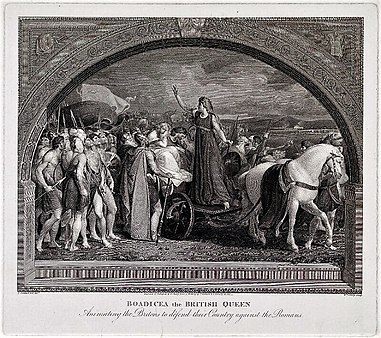

In film a TV, Boudicca has been portrayed four times.
Boadicea (1927), a British silent film starring Phyllis Neilson-Terry.
Warrior Queen (1978), a British television series starring Sian Phillips.
Boudica (2003), a British television film starring Alex Kingston.
Boudica (2023), a British drama film starring Olga Kurylenko.
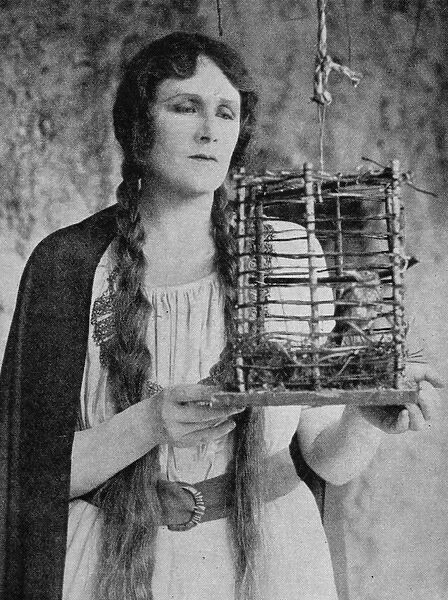


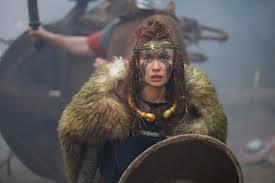
#boudica#boudicca#royal history#iceni tribe#boadicea#warrior queen#romans#roman#roman empire#briton#britain#queen#prasutagus#king#rome#emperor#nero
3 notes
·
View notes
Text

Northern Britain: Coel Hen is a familiar figure in many ancient Welsh genealogies, with most of the kings of the north of Britain being able to trace their descent from him.
#historyfiles#history#Post-Roman#Romano-Britons#britain#ancient welsh#welsh#Coel Hen#Old King Cole#kings#genealogies#descent
5 notes
·
View notes
Photo
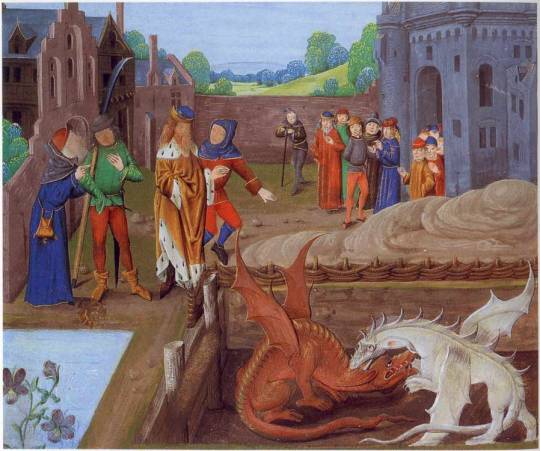
The Historical Value of Geoffrey of Monmouth
An Original Essay of Lucas Del Rio
The year was 1136. Britain in recent centuries had come to be defined by her English, Welsh, and Scottish boundaries. Of the three, England by far exercised the greatest hegemony. Most of the people living there talked in the English tongue, although the Norman leadership spoke French. This was because the population of England consisted mainly of the Anglo-Saxons, with their Norman-French overlords only recently having seized power. There had been a time, however, when the Saxons were the invaders, for they were not the indigenous people of the island. It was the story of Britain and her early history that the Welsh clergyman Geoffrey of Monmouth told in his 1136 work The History of the Kings of Britain.
Other British historians, including those of the present day and his own contemporaries, have tended to be highly critical of Geoffrey. His work, they say, is filled with myth. There is no doubt that there is a great deal of legend contained within its pages, although there are also reasons that the text deserves to be the subject of historical research. Many early history books filled in gaps of knowledge with legend, and the myths the medieval Welshman provides offer insight into the now largely forgotten traditional beliefs of the Celtic Britons. It is also the only surviving source to thoroughly explore the history of Britain prior to Roman occupation. Some of the episodes of British history from the Roman era and early Middle Ages touched on by other writers are discussed in far more detail by Geoffrey. Finally, his account of the life of King Arthur towards the end of the book is among the earliest sources for the Arthurian legend.
Geoffrey was aware that there were other writers of British history, but he felt that he could offer insight that others had not yet been able to do. “It has seemed a remarkable thing to me that, apart from such mention of them as Gildas and Bede had each made in a brilliant book about the subject, I have not been able to discover anything at all on the kings who lived here before the Incarnation of Christ, or indeed about Arthur and all the others who followed on after the Incarnation,” says Geoffrey as he opens his book. In this fragment of his opening statement, he is clearly giving praise to Gildas and the Venerable Bede, two historians who had lived centuries before his own time but whose works were highly respected. The first of these, published by the Romano-British monk Gildas in 540 AD, was On the Ruin and Conquest of Britain. When Gildas wrote, Roman occupation was still a fresh memory, and the withdrawal of Roman garrisons had left the Britons vulnerable to Germanic, Irish, and Pictish invaders. Gildas, in his book, writes a brief history of how the Romans had once subjugated the island and then how they had left. Later, the book consists of Gildas condemning the new kings who had emerged from the former Roman province. From his perspective, they were both sinful and had been unable to effectively respond to the challenges facing a post-Roman Britain.
The other British historian referenced by Geoffrey at the start of his book is the Venerable Bede, who wrote much later than Gildas but still a very long time before he himself wrote The History of the Kings of Britain. His chief work, and probably the one that Geoffrey is calling “a brilliant book,” was the 731 AD book Ecclesiastical History of the English People. As the title suggests, the primary focus of the book is the history of the church in English society. Along the way, Bede also chronicles the wars, cultural changes, and royal dynasties of the era. Ecclesiastical History of the English People is the oldest surviving comprehensive British history book, and one that was the gold standard for other British history books to emulate for much of the rest of the medieval era. Even today, it remains invaluable for the particular time period that it covers. Geoffrey obviously respected both him and the earlier Gildas, yet he saw certain weaknesses in works that did indeed have a great deal of merit. Britain in the era prior to the dawn of Christianity is almost entirely ignored by the two historians. Their chronicles of the early medieval era also are lacking in biographic information of the kings of the Celtic Britons. Gildas offers more criticism of leadership style than any real biographical detail, and Bede neglects the Britons in favor of the lives of Anglo-Saxon kings.
“The deeds of these men were such that they deserve to be praised for all time,” continues Geoffrey, making it clear that he is setting out to write a book that he feels deserves to exist. “These deeds were handed joyfully down in oral tradition,” he asserts, although he also claims to have used as a source “a certain very ancient book written in the British language.” Certainly, any history of the Britons written at this point which covered the span that it did would have had to make use of oral tradition. A trickier question is whether or not the “ancient book written in the British language” really existed. Prior to English becoming the dominant language, the Britons had spoken a language called Brythonic, which eventually branched into the modern Celtic dialects of Breton, Cornish, and Welsh. As someone who was Welsh, especially at a time when Wales was not yet as Anglicized as it would later become, it seems perfectly feasible that Geoffrey would have had knowledge of Brythonic. Modern knowledge of Brythonic is limited, but it may have been written in the Ogham alphabetic script that was at the time used by the Irish and the Picts. Geoffrey could, however, have simply been adding such a detail at the beginning of his book to capture the attention of his audience. Discovering an “ancient book” is more exciting than depending solely on oral tradition.
Geoffrey clearly made use of surviving sources whether or not he really had an “ancient book written in the British language.” Bede, whom Geoffrey highly respected despite perceiving certain shortcomings, was one. Both Ecclesiastical History of the English People and The History of the Kings of Britain start their chronicles by introducing the island of Britain herself, with very similar descriptions of her geography and natural resources. This opening of Bede must have been as influential on medieval British historians as the rest of his book, as it is also closely copied by Henry of Huntington, a contemporary of Geoffrey, in History of the English. Next, Geoffrey makes a statement that very much sets up a great deal of the rest of his book, which largely consists of the epic struggle of the Britons against hostile foreigners such as the Romans, Norwegians, and Irish. “Britain is inhabited by five races of people,” he says. Even though “the Britons once occupied the land from sea to sea,” he declares that “the vengeance of God overtook them because of their arrogance and they submitted to the Picts and the Saxons.”
The first tale told by Geoffrey is the one that is the most blatantly a legend, and also one that ties in closely with Greco-Roman mythology. In fact, Greco-Roman myth is a prominent theme for much of the book, with the early Britons described as worshiping their deities. Multiple explanations can be offered for this. For one, there was plenty of nostalgia in the Middle Ages for classical antiquity, which some medieval Europeans perceived to have been a more civilized time. However, perhaps a better explanation is that Celtic religion was assimilated into that of the Roman Empire when Celtic lands were conquered. Today, many aspects of Celtic religion are lost to history, and this may have been no less true at a time when Britain had already long been Christianized. It seems likely that all Geoffrey knew of the religion of the Celtic Britons was its eventual fusion with Roman elements. All of the references to classical mythology in the book align more closely with the Romans than with the Greeks. Roman names of the gods and goddesses are used, the book incorporates the story found in the Latin poem The Aeneid by Virgil, and the Greeks are portrayed as antagonists while the Trojans are glorified.
The story Geoffrey tells at the beginning of his narrative is also told to an extent in an older work from 833 AD called The History of the Britons. While the authorship of the work is disputed, and it may actually be a compilation of multiple authors over many years, The History of the Britons is commonly ascribed to the monk Nennius. Like The History of the Kings of Britain, the text attempts to chronicle history from the perspective of the Celtic Britons rather than the Anglo-Saxons who were writing the overwhelming majority of the accounts. Both books tell many of the same stories with some differences, although The History of the Britons is significantly shorter than the work penned by Geoffrey. At the start of both books, the reader is introduced to a great-grandson of the Trojan hero Aeneas by the name of Brutus. After accidentally killing his father, he is exiled from Italy and ultimately arrives in Britain. Apparently it was from him that the island took her name. This cannot be true, of course, because the term “Britain” originates with Greek explorers and was not used by native Britons prior to contact with Mediterranean peoples. Nennius, or whomever else may have written The History of the Britons, does not detail how Britain was populated. Nor does the book History of the English by Henry of Huntington, who also tells the story of Brutus.
For all the reader knows, Britain may already have had inhabitants, and Brutus may merely have become a person of prominence there. Geoffrey, on the other hand, tells a far more fanciful tale. In his book, the island “called Albion” when Brutus arrived “was uninhabited except for a few giants.” Accompanying Brutus to Albion were other descendants of those who had lived in Troy. After the Trojan War, Geoffrey tells his reader, the Greeks had enslaved their vanquished enemies. Brutus can be described as leading a revolutionary Exodus of sorts against an apparent “King of the Greeks.” Some modern readers may view such a term with skepticism, noting that Greece in antiquity was divided into numerous independent city-states. It should also be noted, however, that Greece was organized in this fashion during the archaic, classical, and hellenistic eras of Greek history. Much less is known of Greek society during the Bronze Age, when the Trojan War would have taken place, due to a total absence of literature. The Iliad by the legendary poet Homer describes Greek forces being commanded by an overlord named Agamemnon during the Trojan War.
Regardless of any other details of this section of the narrative, it is almost certainly fantasy. However, it has value in that it shows how the myths of the Britons meshed at some point with their Roman conquerors. As the story is told, albeit in much less detail, in The History of the Britons more than three hundred years earlier, Geoffrey cannot have simply made the whole thing up for entertainment value. Perhaps of greater interest to historical scholarship are the stories that immediately follow, which tell of a Celtic society in Britain prior to Roman subjugation. No written records exist from this era of British history, so a book preserving its oral traditions is invaluable. Some readers may be surprised by the tales of powerful kings, burgeoning towns, and massive wars, possibly meeting them with skepticism. It is nearly impossible to assess the accuracy of the stories, although they should not be dismissed. A common yet ignorant image of pre-Roman Britain is that it was barely emerging from the Stone Age, yet archaeology demonstrates otherwise. Trade goods have been unearthed from as far away as Egypt and Greece, and it should be remembered that the Celtic Britons managed to construct the magnificent monument now known as Stonehenge.
One of the first stories after the kingship of Brutus, and certainly one of interest, follows the partition of the island amongst his three sons. There are no quarrels between them, but they end up having to repel an invasion of the Huns. As the Huns did not invade Europe until the final decades of the Roman Empire, it is impossible that this exact circumstance could have taken place. It is a stretch to suggest the Huns even existed just a few generations after the Trojan War. However, there have been numerous nomadic peoples who have invaded different regions of Europe at various points in history. A horde similar to the one led back Attila could feasibly have built boats and sailed to Britain, and they may simply have been remembered later by a familiar name. On the other hand, the ravages of the Huns in Europe could have created a legend that they had attacked Britain many centuries earlier.
Some of the events that Geoffrey claims to have occurred at this point in British history can be observed in British lore in general, indicating that they were indeed derived from oral tradition. Modern audiences are likely to instantly recognize the story of King Lear, which William Shakespeare would turn into a play hundreds of years after The History of the Kings of Britain was written. A lesser known fact is that other Elizabethan playwrights penned plays concerning Lear and different kings that Geoffrey wrote about. There is another tale, that of the brothers Belinus and Brennus, which may initially seem to be fantasy but possibly has roots in reality. Belinus and Brennus both desire the British kingship and fight multiple civil wars over it, which on one occasion leads to Brennus fleeing to Gaul. While in this foreign land, he befriends Segnius, the Duke of the Allobroges, and eventually becomes duke himself. After the brothers decide to put aside their differences and unite, they fight various leaders in what would one day be France and then go on to invade Italy. They even sack Rome herself.
The idea of the Britons sacking Rome at a time well before the Romans had ever reached Britain may seem preposterous. Geoffrey concludes his biographical information on Brennus by stating that “I have not attempted to describe his other activities there or his eventual death, for the histories of Rome explain these matters.” By “histories of Rome,” Geoffrey is likely referring to a 9 BC work of this name by the ancient Roman historian Livy, who writes of the Celts sacking Rome early in her history. Leading the Celts in this endeavor was a chieftain by the name of Brennus. Much later in Roman history, when Julius Caesar battled the Gauls, these enemies of his often received aid from the Britons, so there easily could have been Britons involved in the events described by Livy. Brennus could actually have been born in Britain, or his acclaim amongst the Celtic tribes may have caused the Britons to claim that he was one of them. As the title of The History of the Kings of Britain suggests, there are descriptions of the lives of many other British kings, including in the pre-Roman era.
A rising action in the narrative of the book is when the Romans arrive on British soil. Geoffrey asserts that Julius Caesar led the earliest Roman expeditions to Britain, as the Roman general himself attested to in his 52 BC memoir Commentaries on the Gallic War. Caesar states in his memoir that he wished to explore Britain due to her people providing support to the tribes in Gaul that he was fighting. However, Geoffrey claims that he launched an invasion after the Britons rejected his demand that they immediately submit to Roman rule. As this is the time that the Romans started to write down information about events occurring in Britain, it is often said to be when the “recorded history” of the island begins. Other medieval accounts of British history concur with this notion, for they mostly ignore the earlier centuries described in The History of the Kings of Britain. Gildas says nothing of Britain before the Romans. In Ecclesiastical History of the English People by Bede, Chapter 1 is a summary of Britain as an island, while Chapter 2 begins with the words “Britain remained unknown and unvisited by the Romans until the time of Gaius Julius Caesar.” Nennius and Henry of Huntington skip to the arrival of Julius Caesar after their descriptions of Britain being settled.
The account given by Geoffrey of Julius Caesar and his activities in Britain does not contradict Bede, Nennius, or Henry of Huntington in any major way, although he provides far greater detail. Each of the chronicles describe Caesar failing in his first invasion and defeating the united forces of Cassivelaunus in the second. Bede, unlike the others, asserts that the Romans lost control of Britain right after Caesar departed from the island and did not regain it until the reign of Emperor Claudius. Geoffrey tells his reader that Britain was reduced to a tributary state after the campaign led by Caesar, with Claudius invading when the Britons stopped paying the tribute owed to Rome. Between the initial subjugation and the resumption of war, Geoffrey says that the Britons would be ruled successively by Tenvantius, Cymbeline, and Guiderius. Tenvantius and Cymbeline are known to modern historians as descendants of Cassivelaunus who were later leaders of his tribe, and Cymbeline was another figure that Shakespeare penned a play about. Details about the war with Claudius, however, are very fanciful and therefore dubious.
Sometimes The History of the Kings of Britain downplays the importance of Roman rule at this time in favor of discussion of local affairs of the Britons. Both Bede and Geoffrey mention a certain King Lucius. They agree that, in 156 AD, Lucius was the first British king to convert to Christianity and that many other Britons were soon to follow in his footsteps. Lucius is mentioned in other medieval sources, and scholars today continue to debate whether or not he really existed. Geoffrey later describes the persecution of British Christians by the Emperor Diocletian, a despot whose oppressive actions are also condemned by Gildas and Bede. During their accounts of the Diocletian persecutions, Bede and Geoffrey both tell of the martyrdom of St. Alban. All of the chroniclers write that the Roman Empire struggled more and more with usurpers at this point in time, some of whom came from Britain, and that this weakened imperial resources. In a year that Bede assigns as 409 AD, the Romans were forced to withdraw from the island forever.
Geoffrey writes of a leader coming to power in Britain after the Roman departure named Vortigern. Gildas, Bede, Nennius, The Anglo-Saxon Chronicles, and Henry of Huntington all also include him. They discuss Vortigern warring with the Picts, whom Geoffrey says that he antagonized after he had some of them executed for assassinating his predecessor. It was what would happen next according to the medieval chroniclers, a tale which many modern historians dispute the accuracy of, that changed Britain forever. In the year said by The Anglo-Saxon Chronicles to have been 449 AD, Vortigern hired the Saxon brothers Hengist and Horsa to help him in the war that he was losing against the Picts. Hengist and Horsa, according to Geoffrey and the other chroniclers, were very successful in fighting the Picts. The History of the Kings of Britain says that this allowed the brothers to convince Vortigern to allow more and more Saxon warriors to come to Britain until they were able to turn on the army of the king.
The History of the Kings of Britain concludes with the victory of the Saxons but a glimmer of future hope for the Britons. Vortigern encountered a young Merlin, who told him of his doom and symbolized the events of the future by showing him a battle between a red and white dragon. This same prophetic vision is also found in the work of Nennius. After the death of Vortigern, the Britons enjoyed some military success against the Saxons and reached their peak of glory, says Geoffrey, under King Arthur. He died of wounds sustained in battle in 542 AD, yet the Britons continued to resist under eleven more kings until the death of King Cadwallader in 689 AD. Arthur is also described by Nennius and Henry of Huntington as having led battles against the Saxons. Historians today tend to dismiss the possibility of the existence of Arthur, just as they dismiss the value of Geoffrey, yet sometimes lore and oral tradition go a long way in outlining the events of history.
#analysis#art#Arthurian legend#article#britain#British history#Britons#celtic#dragon#essay#geoffrey of monmouth#history#king arthur#Kings#legends#literature#medieval#medieval literature#Middle Ages#welsh
16 notes
·
View notes
Text
i just wanted to point out that joe holds his beer like its a tea cup and he’s at a royal party


#a true briton#king joe#joe alwyn#taylor swift#swifties#taylorswift13#tswift#taylornation#midnights#taylurking#jaylor#taylor x joe#joe x taylor#joe and taylor
28 notes
·
View notes
Note
Just watched the first episode of Arthur of the Britons and have belatedly discovered a youngish Brian Blessed as King Mark of Cornwall, flaunting his bare arms at me. MUSCULAR BARE ARMS. Hnggg. I just thought you should know.
This is indeed very important information and you have provided a great service to the community by spreading the word.
15 notes
·
View notes
Text
Region locked discs and drives are going to turn me into the Joker I swear this is so irritating. Just give me the obscure British show you bastard!!!
16 notes
·
View notes